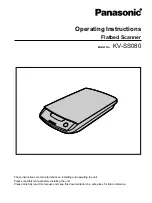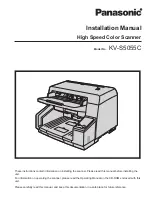
Page 16
5.
Operation of the instrument
5.1. Powering up the flightDAQ
The flightDAQ has one connector and cable which supplies the unit with power and also provides
CAN and Ethernet comms. Ensure all the connections are made before powering up the flightDAQ.
The flightDAQ should not be hot plugged with the power connector. Doing so can cause
permanent damage to the unit. Always switch the power at the power supply source.
Upon power up, after 3 seconds the blue LED will light constantly while the flightDAQ boots up. This
boot-up period will vary depending on the type of scanner and the number of channels. The boot up
time is also influenced by the Ethernet initialisation process. This process requires a valid network
connection to perform auto negotiation and link check status. If there isn’t a valid connection the
process waits until either a network is found or the timeout occurs. This timeout is configurable via
setup and ranges from 0 to 30 secs per check (2 checks).
When the flightDAQ has finished booting, the blue LED will flash at a constant rate to show that the
system is running (unless auto hardware trigger enable has been set – see later).
It should be noted that the flightDaq2 features a smart power supply that will only enable operation
between 18 and 32 VDC. If the power supply should move outside of these limits, the FlightDaq will
sense this and shut itself off until a correct power supply is restored.
5.2. Connecting to the FlightDaq
One the blue LED is flashing, the flightDaq2 can be connected to by any one of the following methods
[1] By using Ethernet and the embedded web server
[2] By using Ethernet and the Chell MicroDaqX software
[3] By using Ethernet and custom software
[4] By using CAN and custom software
5.2.1. Connecting to the Webserver
To connect to the internal web server, simply connect the flightDAQ to a suitable PC and simply type
the i/p address of the flightDAQ (found on the label) into a web browser. The web server will allow
you to read data (both absolute and differential) as well as view all the configuration options available
on the flightDAQ.
For a PC to successfully connect over Ethernet, the first three parts of the i/p address must be the
same on the FlightDaq and the PC that is making the connection. For example, if the i/p address of
the FlightDaq is 192.168.1.190, the PC must have an i/p of 192.168.1.XXX. Once connection has
been made, the i/p address can be changed to suit the user’s network.
NOTE. If the i/p or subnet mask of the flightDaq is changed, it must be recorded (we recommend
that it is written on a new label) as it will not be possible to connect to the flightDaq is these are not
known. In this instance, the flightDaq will need to be returned to the factory so the i/p address can be
reset.
















































